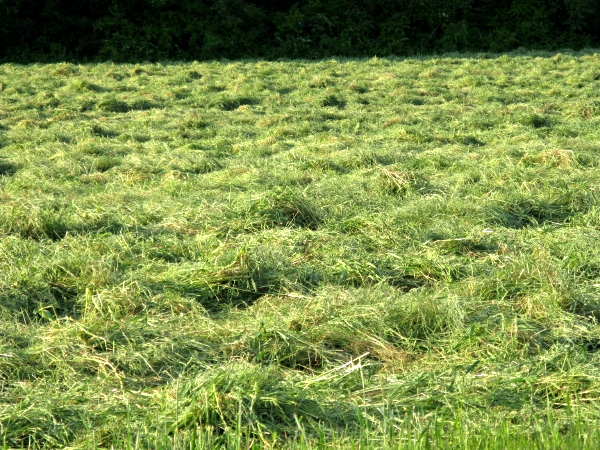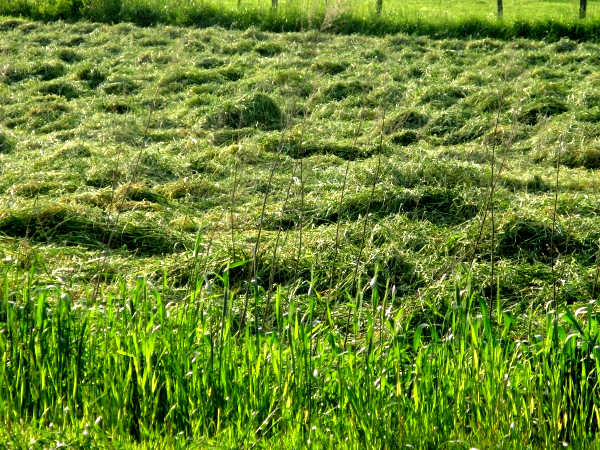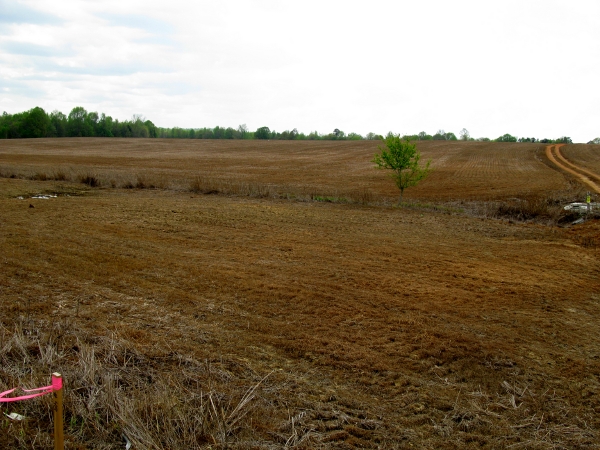I posted pictures previously of a brown, sterile field in Union County (see below) where the winter cover crops had been "nuked" with herbicides to kill them in preparation for plowing the fields for planting. Below are four pictures of cover crops done right: mowed down instead of killed with herbicides in anticipation of being plowed back into the earth to add the organic matter into the soil. The term "green manure" refers to the powerful addition these grasses and legumes make to the soil when they are cut and plowed back in to be broken down by the soil's micro-organisms.
There are numerous reasons for planting cover crops in fields during the non-growing seasons:
1. Prevent soil erosion due to wind and rain.
2. Some cover crops pull nitrogen out of the air and "fix" the nitrogen in tiny "balls" onto the roots of the crops. This nitrogen is the same as the "N" on the bags of the fertilizer farmers and homeowners use (the first number in the three-digit fertilizer rating, like 10-10-10, refers to nitrogen. The second is phosphorous and the third, potassium). Cover crops that are legumes, like peas, fix nitrogen in the soil in a totally natural fashion.
3. Providing "green manure" when the cover crops are plowed under. The cover crops become food for micro-organisms and worms.
4. If the cover crops are allowed to flower (e.g., crimson and white clover are familiar examples) they provide acres of pollen for bees, wasps, and other pollen collectors and spreaders.
5. The roots of the cover crops keep the soil from compacting during the winter.
To be honest, I don't know if the grasses seen below are going to be plowed under or baled as hay. But I'm showing the pictures just to provide an image of the lush abundance of organic matter that results from a field of cover crops. This grass looks like the waves on the surface of a choppy ocean they are so abundant. These pictures were taken very near my neighborhood -- one of the remaining agriculture islands left (note the cows in the field with new homes in the background).




Finally, compare the lushness of this cut field with the barrenness of the "nuked" field I posted previously:

There are numerous reasons for planting cover crops in fields during the non-growing seasons:
1. Prevent soil erosion due to wind and rain.
2. Some cover crops pull nitrogen out of the air and "fix" the nitrogen in tiny "balls" onto the roots of the crops. This nitrogen is the same as the "N" on the bags of the fertilizer farmers and homeowners use (the first number in the three-digit fertilizer rating, like 10-10-10, refers to nitrogen. The second is phosphorous and the third, potassium). Cover crops that are legumes, like peas, fix nitrogen in the soil in a totally natural fashion.
3. Providing "green manure" when the cover crops are plowed under. The cover crops become food for micro-organisms and worms.
4. If the cover crops are allowed to flower (e.g., crimson and white clover are familiar examples) they provide acres of pollen for bees, wasps, and other pollen collectors and spreaders.
5. The roots of the cover crops keep the soil from compacting during the winter.
To be honest, I don't know if the grasses seen below are going to be plowed under or baled as hay. But I'm showing the pictures just to provide an image of the lush abundance of organic matter that results from a field of cover crops. This grass looks like the waves on the surface of a choppy ocean they are so abundant. These pictures were taken very near my neighborhood -- one of the remaining agriculture islands left (note the cows in the field with new homes in the background).




Finally, compare the lushness of this cut field with the barrenness of the "nuked" field I posted previously:






No comments:
Post a Comment